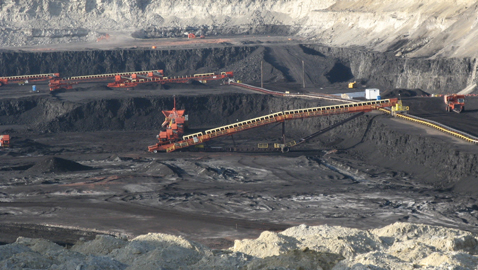
The latest mid-year economic analysis 2014-15 (MYEA) released by the Union Finance Ministry on December 12 is remarkable for its frank assessment of the state of the economy, and the roadmap it charts for the medium-term outlook.
There has been a striking turnaround in India’s macro-economy and investor sentiment since the government took over, reflected in lower inflation, a lower current account deficit, surging capital inflows and stock market valuations, and the bottoming out of the growth deceleration seen for nearly three years. The Modi government, since coming into office, has taken a number of policy actions, including deregulating diesel prices, raising the price of natural gas, direct transfers for cooking gas, moderating inflationary pressures in agriculture, increasing foreign direct investment caps in defence, expediting financial inclusion, and moving toward coal deregulation.
The government faces challenges in fiscal sphere, as the economy is growing slower than expected affecting revenue growth; and the optimistic revenue projections in the budget have not materialised. The combination has led to a likely shortfall of Rs.1.05 trillion in tax receipt; which together with legacy of last year’s expenditure carry-forward, has made fiscal consolidation extremely difficult for the current fiscal. Interestingly, shortfall due to unrealistic over-estimation of tax buoyancy assumed in budget exercise (most of it in indirect taxes) contributed around three-fourths, whereas GDPmp turning out to be lower caused only one-fourth of the tax receipt shortfall. The government has already announced several measures for fiscal prudence and the economy to rationalise expenditure and optimise available resources, including 10 per cent cut selectively in non-plan expenditure, with a view to containing fiscal deficit at 4.1 per cent of GDPmp
Inflation has come down dramatically due to policy actions by the RBI and the government, declining agricultural and oil prices; and the economy growing slower than its potential.
Going forward
In addition to liberalising FDI in insurance, two game-changing reforms, namely Goods and Services Tax (GST), which will create a buoyant source of revenue and place the fiscal position on a solid footing, and the increasing use of direct transfers, combining Pradhan Mantri Jan Dhan Yojana with Aadhaar card that could replace over time extensive government interventions to help producers and consumers, are among the major upcoming reforms.
Investment is yet to pick up significantly. But on the upside, inflation has come down dramatically; the monsoon failed to extract as much of a toll on growth as feared; and the country received a large supply side shock in the form of reduced commodity prices that amounted to about 1.5 per cent of GDP.
The year would end with growth of around 5.5 per cent, against 5.4-5.9 per cent projected in the Union Budget presented in July last.
The country faces challenges that are mostly domestic. The most important amongst them relates to the experience of the last few years that led to over-exuberant investment, especially in the infrastructure and in the form of public-private partnerships. There are stalled projects to the tune of Rs.18 lakh crore (about 13 per cent of GDP) of which an estimated 60 per cent are in infrastructure. In turn, this reflects low and declining corporate profitability and debt overhang, termed “balance sheet syndrome with Indian characteristics,” whose ripples have extended to the banking sector where restructured assets are estimated at about 11-12 per cent of total assets. Displaying risk aversion, the banking sector is increasingly unable and unwilling to lend to the real sector. This syndrome is exerting a drag on future investment/spending.
In these circumstances, the backlog of stalled projects needs to be cleared more expeditiously, a process that has already begun. Where bottlenecks are due to coal and gas supplies, the planned reforms of the coal sector and the auctioning of coal blocks de-allocated by the Supreme Court as well as the increase in the price of gas which should boost gas supply, will help. Speedier environmental clearances and reforming land and labour laws will also be critical.
But even if the backlog is cleared, there is going to be a flow challenge: attracting new private investment, especially in infrastructure. The PPP model has been less than successful. The key underlying the stock problem that afflicts corporates’ and banks’ balance sheets need to be resolved sooner rather than later.
In this context, it seems imperative to consider the case for reviving public investment as one of the key engines of growth going forward, not to replace private investment but to revive and complement it.
The case for public investment going forward is threefold.
First, there may well be projects; for example, roads, public irrigation, and basic connectivity, that the private sector might be hesitant to embrace.
Second, the lesson from the PPP experience is that given the country’s weak institutions there are serious costs to requiring the private sector taking on project implementation risks: delays in land acquisition and environmental clearances, and variability of input supplies (all of which have led to stalled projects) are more effectively handled by the public sector.
Third, the pressing constraint on manufacturing is infrastructure. Power supply and connectivity are key inputs that determine the competitiveness of manufacturing.
This would call for review of the neglect of public investment in the recent past and for a medium-term fiscal policy to find the fiscal space for this capex. In effect, this necessitates not just counter-cyclical but counter-structural fiscal policy, motivated by reviving medium-term investment and growth.
In sum, MYEA concludes that there is growing ground for hope but narrowing room for complacency.











